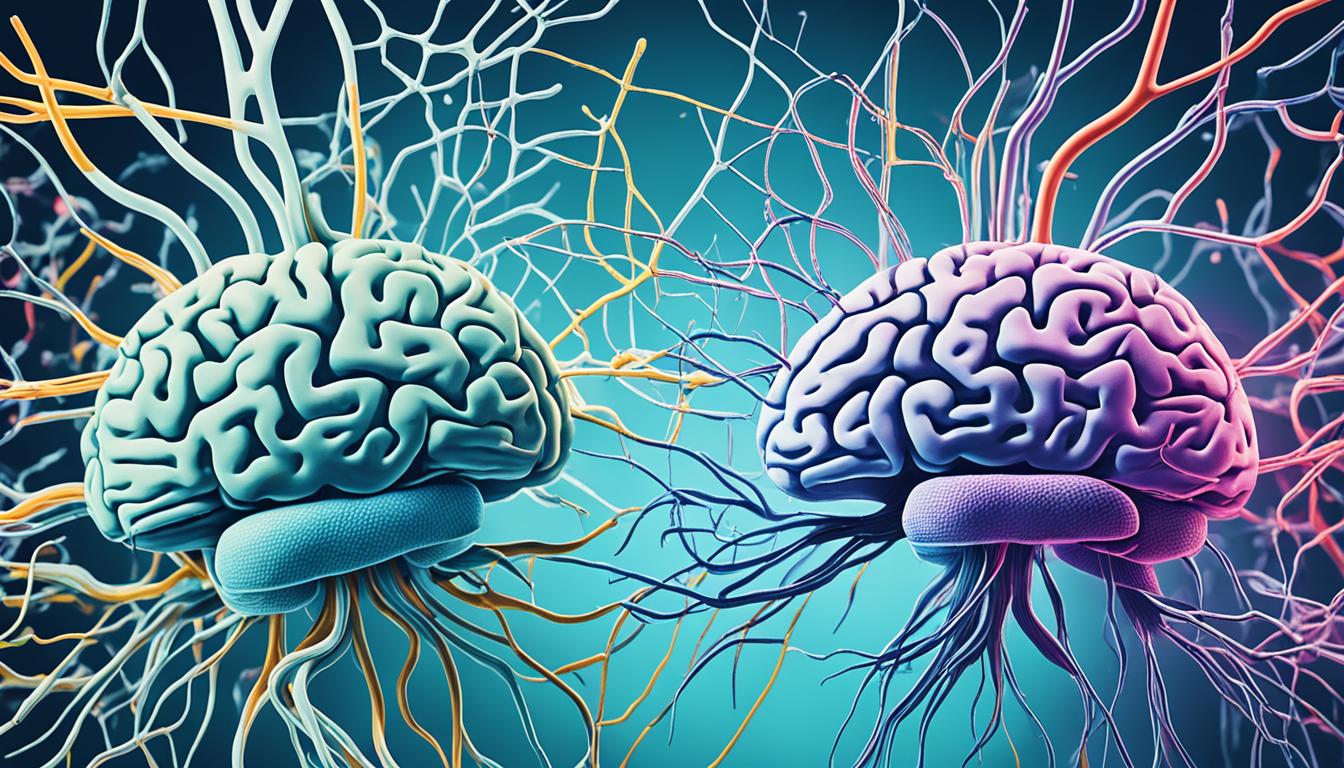Having petit mal seizures can be scary and disruptive, especially for children. These seizures are a form of childhood epilepsy, under the seizure disorder umbrella. It’s crucial to know the symptoms and causes of petit mal seizures to treat them effectively.
Petit mal seizures start in both sides of the brain, which is why they are called generalized onset seizures. These seizures make a person briefly lose awareness, often showing no movement or just slight behaviors like lip-smacking or blinking. They might seem to be daydreaming or stuck suddenly in what they’re doing.
Petit mal seizures have many possible causes. These include genetics, brain issues, injuries, infections, and developmental problems. But pinpointing the exact cause is often hard. Studies show that an uneven brain activity plays a role in these seizures.
To diagnose petit mal seizures, doctors do several things. They take a detailed medical history and look at the seizures’ symptoms and how often they happen. They also run tests, like an EEG, to check brain waves and imaging scans to see if there are any brain structure issues.
Several treatments are there for petit mal seizures. The choice depends on how a person responds. A common treatment is antiepileptic drugs (AEDs). Its variation depends on the specific situation. Surgery and nerve stimulation are options, and some try diets like the ketogenic diet.
Stem cell therapy has become a topic of interest for treating petit mal seizures lately. Stem cells can turn into different cell types. If successful, they could repair brain cells and lower seizure risks.
Living with these seizures can have a big impact. It’s key to find the right treatment, work with healthcare providers, and focus on symptom control. This helps increase life quality.
Key Takeaways:
- Petit mal seizures are a form of childhood epilepsy characterized by brief lapses in awareness and subtle behavioral changes.
- They can be caused by genetic factors, brain conditions, head trauma, infections, or developmental issues.
- Treating petit mal seizures may involve medications (AEDs), surgery, nerve stimulation, special diets, or future stem cell therapies.
- Working closely with healthcare professionals is essential in finding the best treatment plan for personal needs.
Symptoms and Diagnosis of Petit Mal Seizure
Petit mal seizures, or absence seizures, cause a sudden loss of awareness. Recognizing their symptoms is key for proper treatment. It’s vital to understand what they look like for a clear diagnosis.
Petit Mal Seizure Symptoms
The signs of petit mal seizures can differ from person to person. Yet, common signals include:
- Repetitive jerking or stiffening movements
- Loss of control
- Sudden arm and leg movements
- Changes in senses like taste or smell
- Acting absent or staring blankly
Keep in mind, not everyone will show all these signs during a seizure.
Diagnosis of Petit Mal Seizures
Diagnosing petit mal seizures involves looking at the patient’s history, and conducting tests. Healthcare providers do the following:
- Medical history evaluation: They ask about seizure symptoms and any experiences during them.
- Lab tests: Blood tests are done to find any health issues that could cause seizures.
- Electroencephalogram (EEG): An EEG measures brain activity. It’s especially good for seeing the brain waves of petit mal seizures.
- Imaging scans: Scans like CT or MRI make pictures of the brain. They help find any issues or damage that triggers seizures.
Using these steps, doctors can diagnose petit mal seizures. They make sure the diagnosis is correct to plan the best treatment. This approach aims for the best results in managing petit mal seizures.
The image above is for illustrative purposes. It does not show a real person’s condition with petit mal seizures.
Treatment Options for Petit Mal Seizure
Managing petit mal seizures has several treatment options. These options can control the seizures and improve life quality. Antiepileptic drugs (AEDs) are often the first choice. The right medication varies depending on the seizure type and how the person responds. This helps to reduce or stop the seizures.
If medicines don’t work well enough, there are other choices. Surgery is one possibility. It can include different procedures. These surgeries aim to stop the seizures by removing or disconnecting the seizure-causing parts of the brain.
There’s also vagus nerve stimulation. This includes implanting a device to stimulate the vagus nerve. It helps regulate seizures. For some, this method has shown to be effective.
Medication, surgery, and diets can help control petit mal seizures, especially in kids. For example, the ketogenic and modified Atkins diets are known to help manage seizures.
Stem cell therapy is another promising area. It’s being researched for petit mal seizures. Though not widely available, it could be an option in the future.
Choosing the right treatment depends on many factors. These include the type of seizures and individual health. It’s important for those with these seizures to work with doctors. This ensures they get a treatment plan that is best for them.

